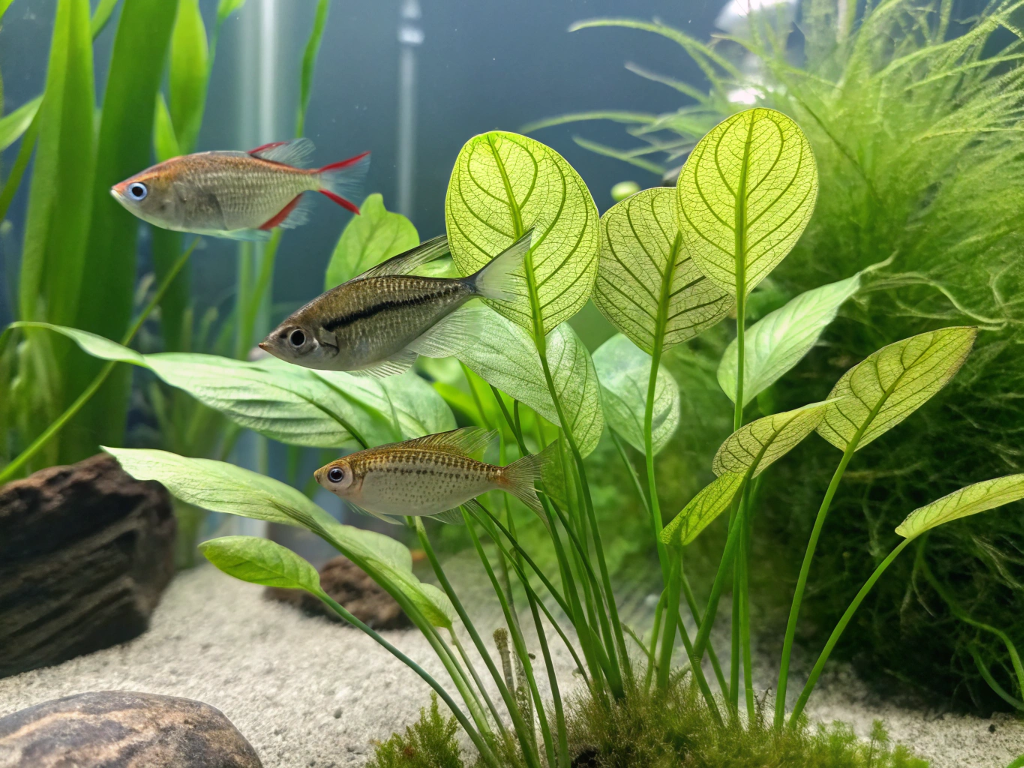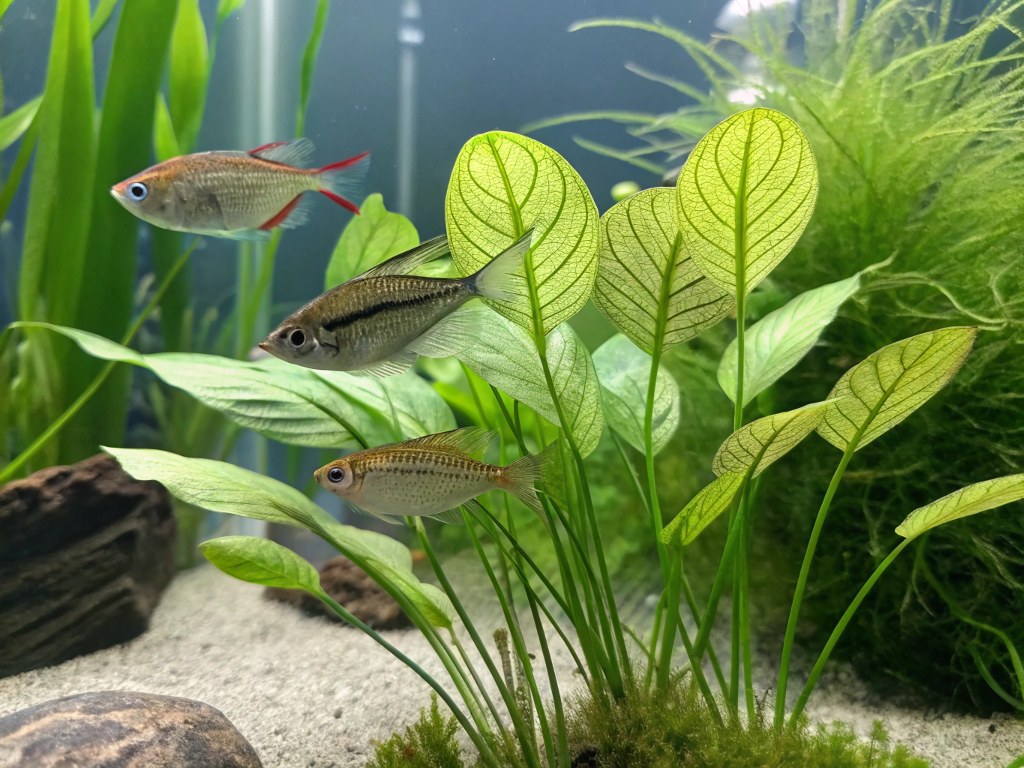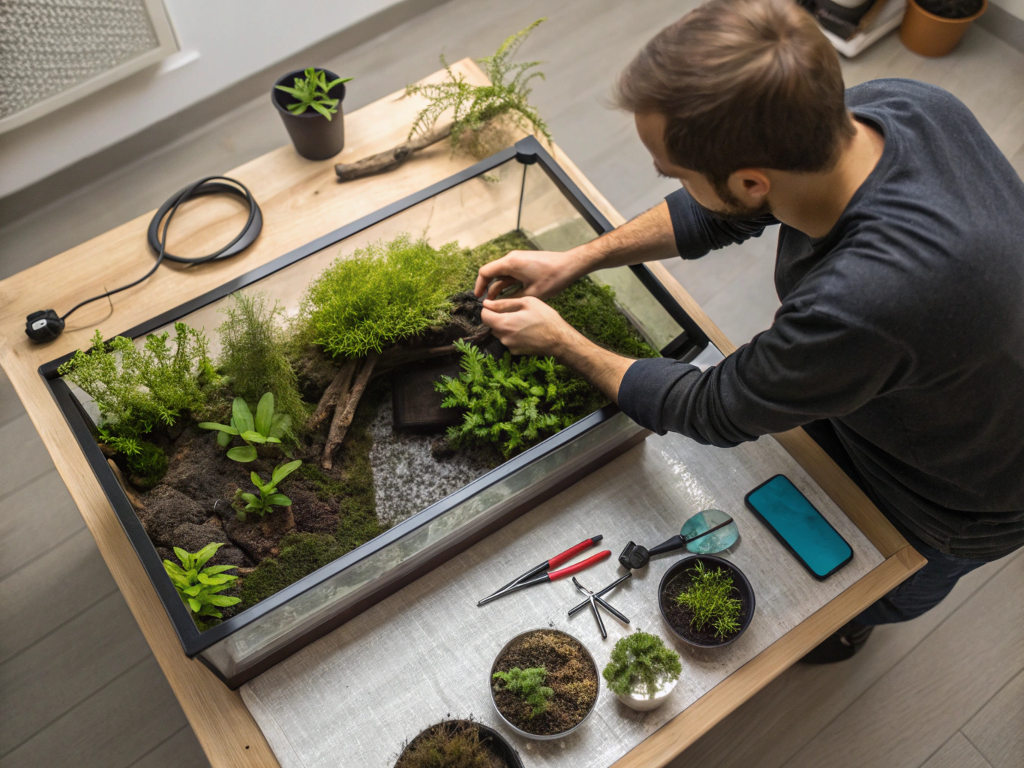What Plants Do Molly Fish Prefer in Their Aquarium?
This post may contain affiliate links.
Selecting the right aquarium plants for your Molly fish isn’t just about aesthetics—it’s essential to creating a thriving environment that mimics their natural habitat. Mollies originate from freshwater streams and coastal brackish waters of Mexico and Central America, where lush vegetation provides shelter, breeding grounds, and supplementary nutrition. Let’s explore the best plant options to keep your Mollies healthy and happy.

Why Plants Matter for Molly Fish
Before diving into specific plant recommendations, it’s important to understand why plants are beneficial for Molly fish. According to research from the American Aquarium Society, live plants:
- Provide natural hiding places and reduce stress
- Improve water quality by absorbing nitrates
- Create surfaces for beneficial bacteria
- Offer supplementary food (Mollies will occasionally nibble on soft plant matter)
- Create a more natural environment that encourages natural behaviors
Top Aquatic Plants for Molly Fish
1. Amazon Sword (Echinodorus bleheri)
Amazon Sword plants are robust and versatile, making them perfect for Molly tanks. Their broad leaves provide excellent shelter for adult Mollies and fry alike. These plants grow to impressive sizes in well-maintained tanks, creating stunning focal points.
2. Java Fern (Microsorum pteropus)
Java Fern deserves its popularity among aquarists keeping Mollies. This low-maintenance plant doesn’t require substrate—simply attach it to driftwood or rocks. Its hardy nature makes it perfect for beginners, and Mollies appreciate the shelter its textured leaves provide.
3. Water Wisteria (Hygrophila difformis)
Water Wisteria grows quickly and features delicate, feathery leaves that Mollies love to swim through. According to Tropical Fish Care Guides, this plant is particularly effective at absorbing excess nutrients, helping to prevent algae blooms in your Molly tank.
4. Anubias (Various species)
Anubias species, particularly Anubias barteri, are excellent choices for Molly tanks. These slow-growing plants have thick, dark green leaves that provide ideal shelter for Molly fry. Their durability makes them resistant to being uprooted or damaged.
5. Hornwort (Ceratophyllum demersum)
Hornwort is a floating plant that can also be planted in substrate. Its needle-like leaves create perfect hiding spots for pregnant female Mollies and fry. As noted by Aquascaping World, floating plants like Hornwort also help diffuse bright aquarium lights, which can make Mollies feel more secure.
6. Java Moss (Taxiphyllum barbieri)
Java Moss creates a carpet-like growth that’s perfect for Molly fry to hide in. This versatile moss can be attached to various surfaces or allowed to float freely. Its dense growth provides excellent filtration for detritus and creates microhabitats for beneficial infusoria that baby Mollies feed on.
7. Vallisneria (Vallisneria spiralis)
Often called “Val” by aquarists, this grass-like plant creates a beautiful backdrop in Molly tanks. Its long, flowing leaves sway in the current, adding visual interest while providing hiding places. Vallisneria is also a fast grower that helps combat algae.

Setting Up Plants for Mollies Successfully
Creating the ideal planted environment for Mollies requires some planning:
Substrate Considerations
For rooted plants like Amazon Sword and Vallisneria, a nutrient-rich substrate is essential. According to Planted Tank Experts, a layer of aquarium soil capped with fine gravel provides ideal growing conditions while being gentle on Mollies who like to forage near the bottom.
Lighting Requirements
Most plants suitable for Molly tanks need moderate lighting—about 6-8 hours daily. Too much light can lead to algae problems, while too little will cause plants to struggle. LED aquarium lights with adjustable intensity work well for planted Molly tanks.
Fertilization Needs
While waste from Mollies provides some nutrients, most aquarium plants benefit from supplemental fertilization. Liquid fertilizers formulated for aquariums ensure plants receive balanced nutrition without harming your fish.

Balancing Plant Density for Mollies
Finding the right plant density is crucial for Molly fish. While these active swimmers appreciate open areas for movement, they also need adequately planted zones for:
- Shelter during rest periods
- Refuge for females from persistent males
- Safe spaces for fry to develop
A good rule of thumb is to keep about 30-40% of your tank planted, with a mix of foreground, midground, and background species creating a naturalistic environment.
Compatibility with Molly Behavior
When selecting plants, consider how Mollies interact with their environment:
- Foraging behavior: Choose sturdy plants that won’t be damaged by occasional nibbling
- Active swimming: Leave open swimming lanes between planted areas
- Breeding needs: Include dense areas where pregnant females can seek refuge and fry can hide

Maintaining Plant Health in Molly Tanks
Healthy plants contribute to a healthy environment for your Mollies. Regular maintenance includes:
- Trimming overgrown plants to maintain swimming space
- Removing decaying leaves promptly
- Testing water parameters regularly
- Performing partial water changes to refresh nutrients
Conclusion
Selecting appropriate plants for your Molly fish aquarium enhances both aesthetics and fish health. The plants recommended above—Amazon Sword, Java Fern, Water Wisteria, Anubias, Hornwort, Java Moss, and Vallisneria—all offer benefits that align perfectly with the needs of Molly fish. By creating a well-planted environment with these species, you’ll provide your Mollies with a naturalistic habitat where they can thrive, display natural behaviors, and even successfully breed.
Remember that a balanced approach to planting—providing both open swimming areas and dense vegetation—creates the ideal environment for these popular livebearers. With proper plant selection and maintenance, your Molly aquarium will not only look beautiful but also support healthier, more active fish.
